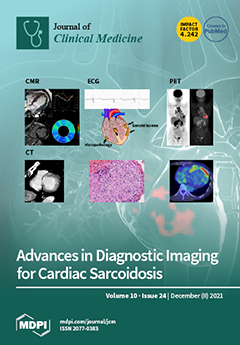Objectives: thromboembolic complications are a major cause of morbidity and mortality following Fontan (FO) surgery. It is also well established that altered FO circulation results in systemic complications, including liver and endothelium damage. We sought to evaluate whether dysfunctions of these sources of hemostatic factors may result in changes of fibrin clot properties. Methods: a permeation coefficient (K
s) and clot lysis time (CLT) were assessed in 66 FO patients, aged 23.0 years [IQR 19.3–27.0], and 59 controls, aged 24.0 years [IQR 19.0–29.0]. K
s was determined using a pressure-driven system. CLT value was measured according to assay described by Pieters et al. Endothelium and liver-derived hemostatic factors along with liver function parameters were evaluated. The median time between FO operation and investigation was 20.5 years [IQR 16.3–22.0]. Results: FO patients had lower K
s (
p = 0.005) and prolonged CLT (
p < 0.001) compared to that of controls. K
s correlated with CLT (r = −0.28), FVIII (r = −0.30), FIX (r = −0.38), fibrinogen (r = −0.41), ALT (r = −0.25), AST (r = −0.26), GGTP (r = −0.27) and vWF antigen (r = −0.30), (all
p < 0.05). CLT correlated with the time between FO operation and investigation (r = 0.29) and FIX (r = 0.25), (all
p < 0.05). After adjustment for potential cofounders, TAFI antigen and GGTP were independent predictors of reduced K
s (OR 1.041 per 1% increase, 95% CI 1.009–1.081,
p = 0.011 and OR 1.025 per 1 U/L increase, 95% CI 1.005–1.053,
p = 0.033, respectively). Protein C and LDL cholesterol predicted prolonged CLT (OR 1.078 per 1% increase, 95% CI 1.027–1.153,
p = 0.001 and OR 6.360 per 1 μmol/L increase, 95% CI 1.492–39.894,
p = 0.011, respectively). Whereas elevated tPA was associated with lower risk of prolonged CLT (OR 0.550 per 1 ng/mL, 95% CI 0.314–0.854,
p = 0.004). GGTP correlated positively with time between FO surgery and investigation (r = 0.25,
p = 0.045) and patients with abnormal elevated GGTP activity (
n = 28, 42.4%) had decreased K
s, compared to that of the others (5.9 × 10
−9 cm
2 vs. 6.8 × 10
−9 cm
2,
p = 0.042). Conclusion: our study shows that cellular liver damage and endothelial injury were associated with prothrombotic clot phenotype reflected by K
s and CLT.
Full article






